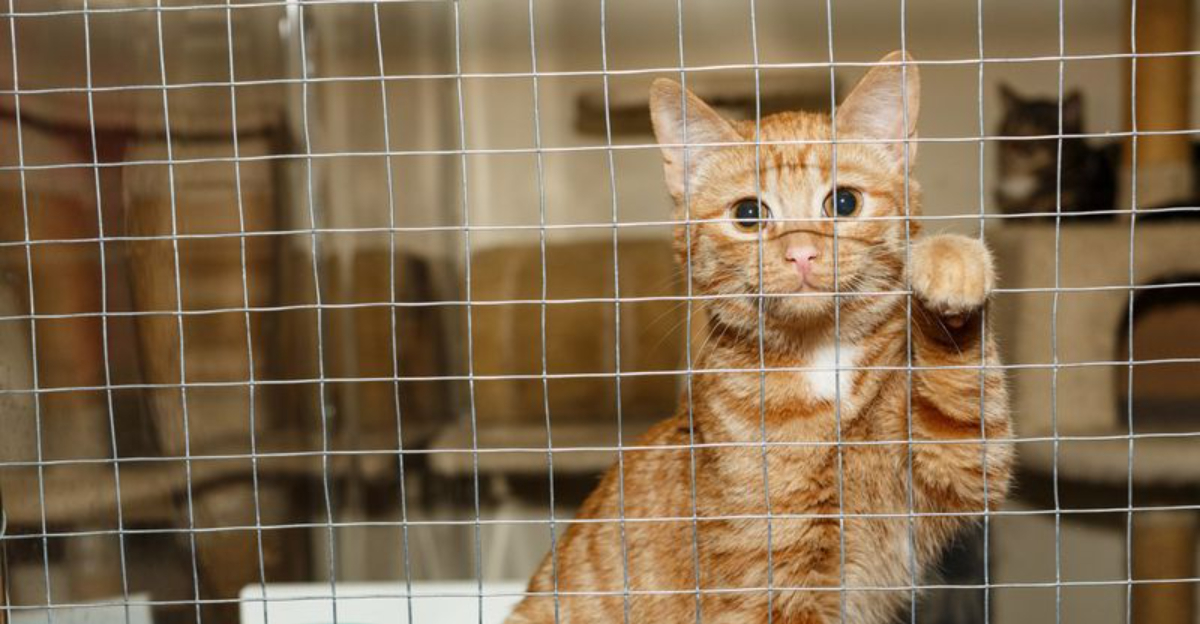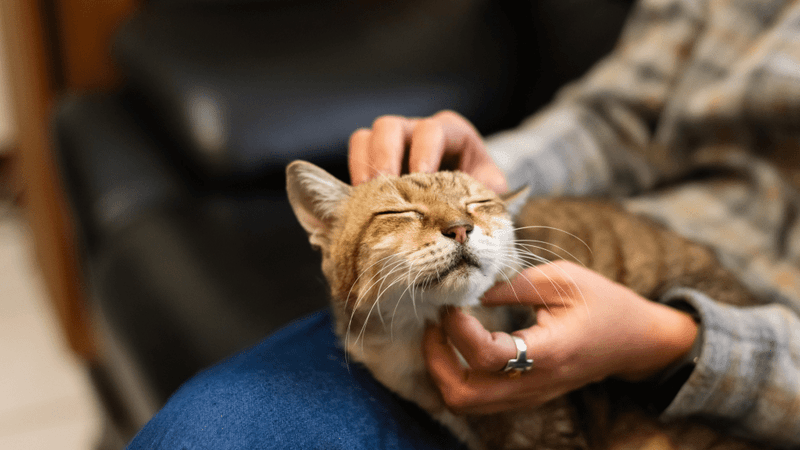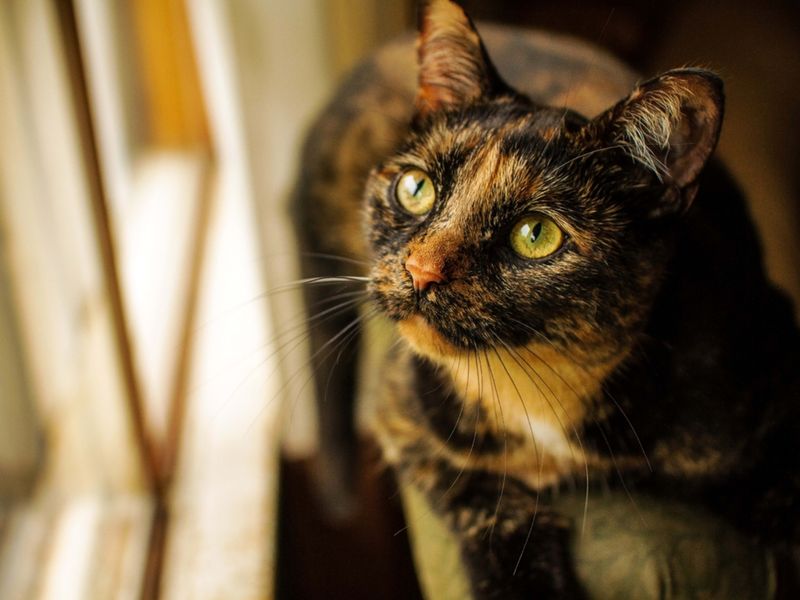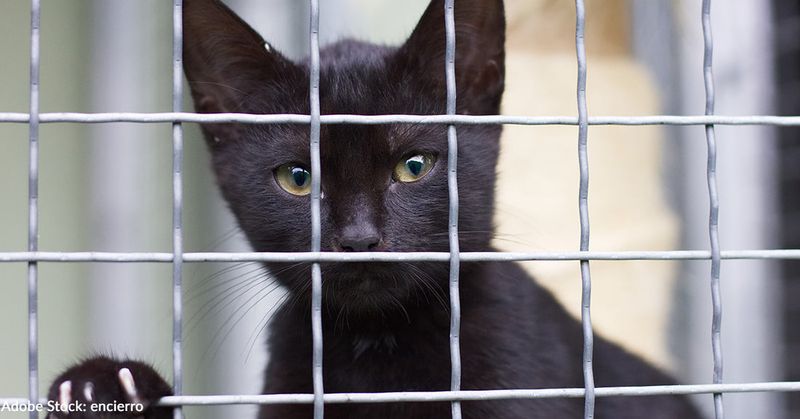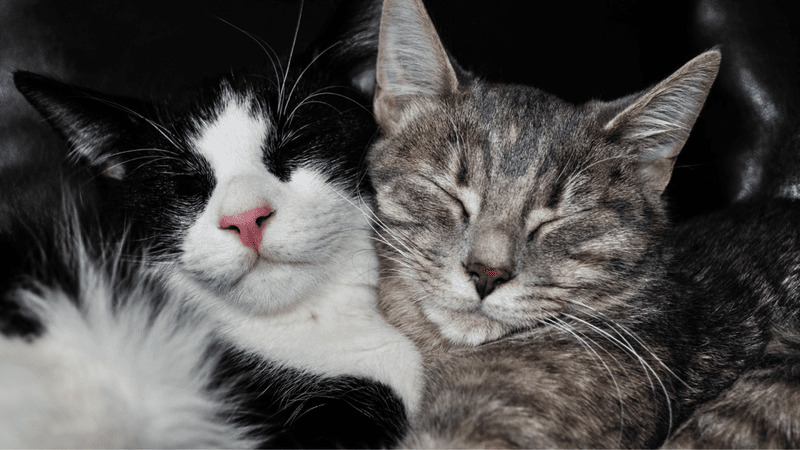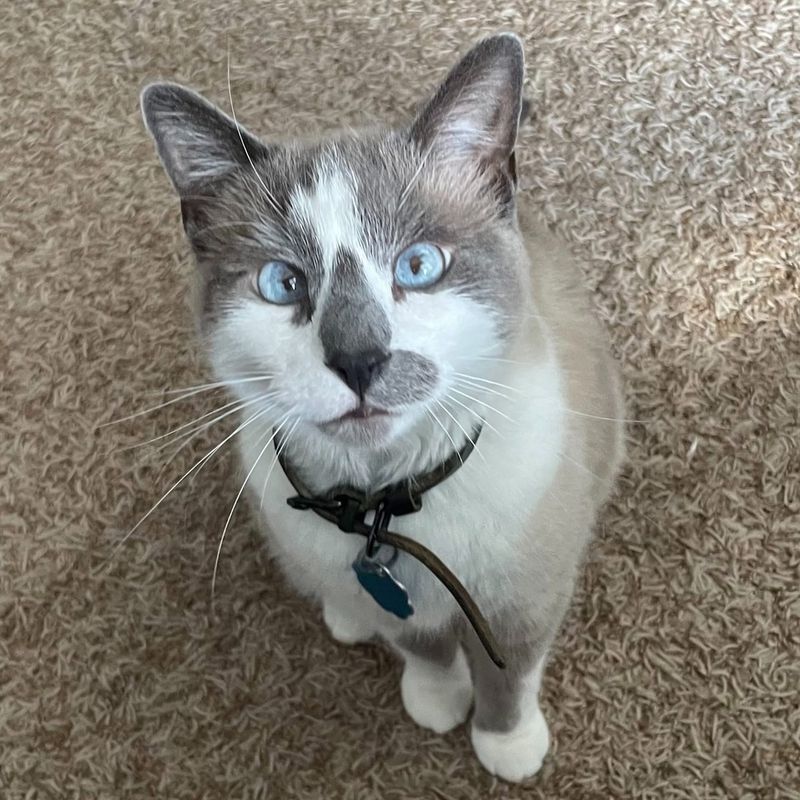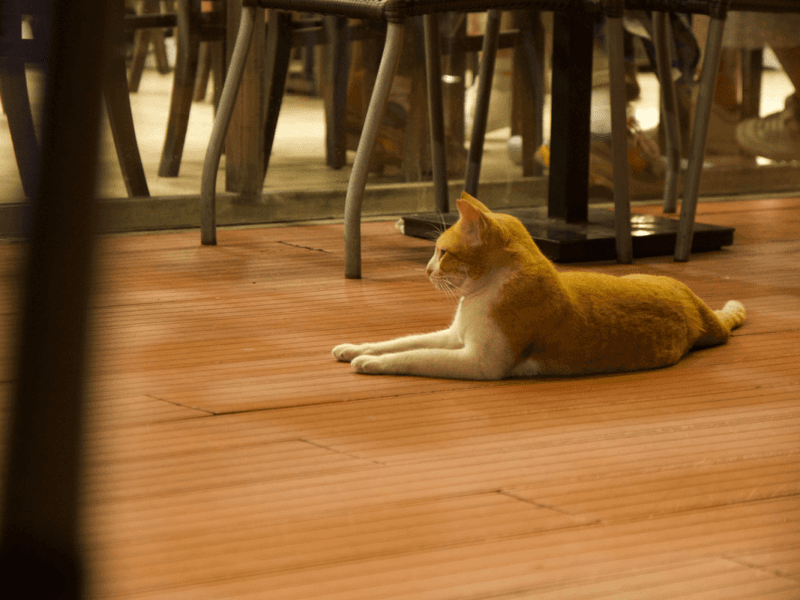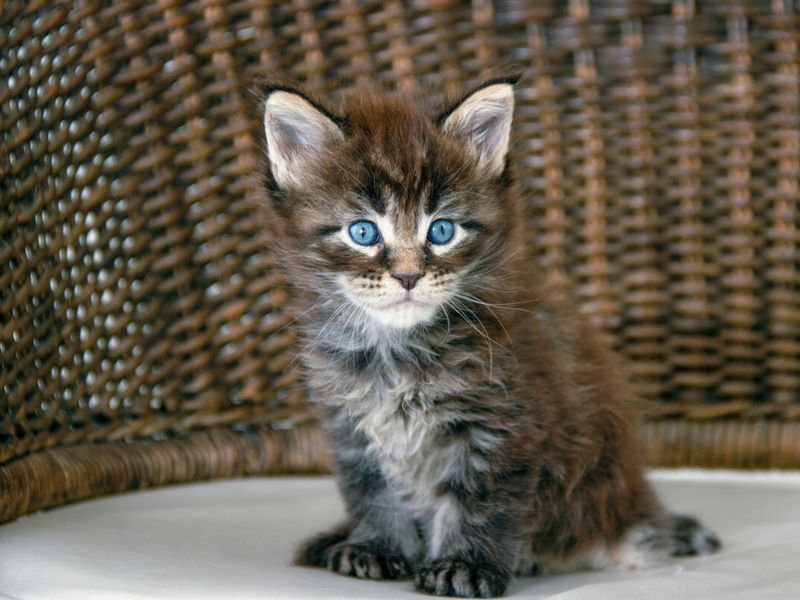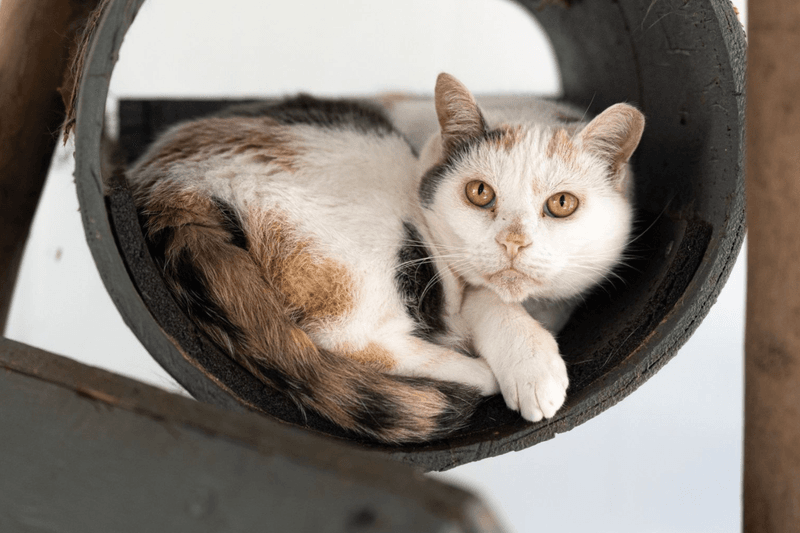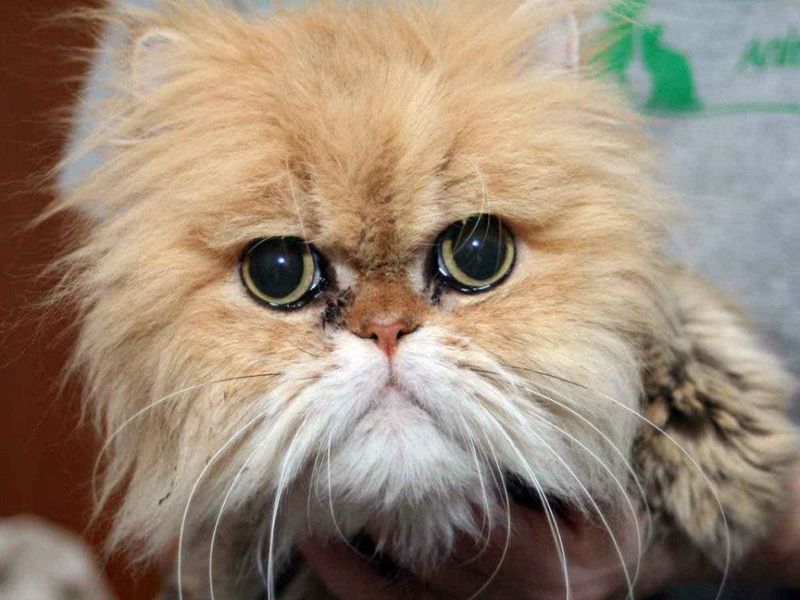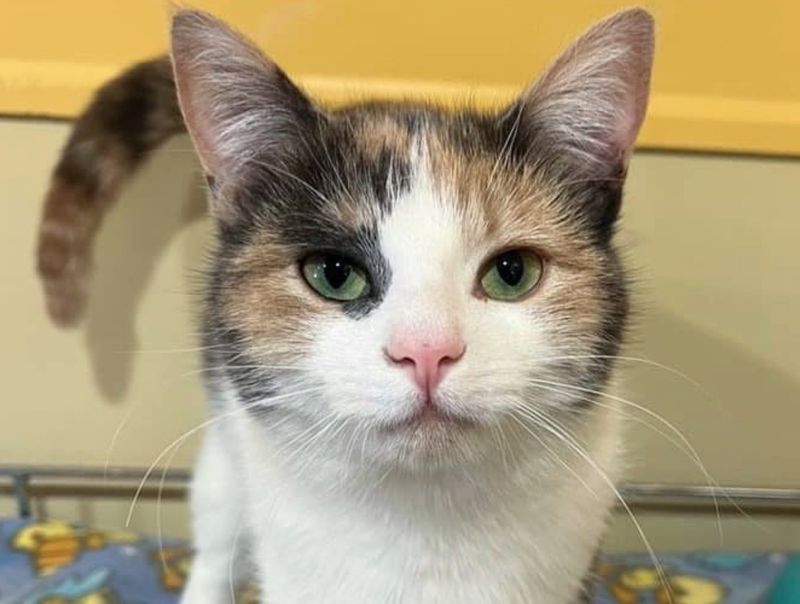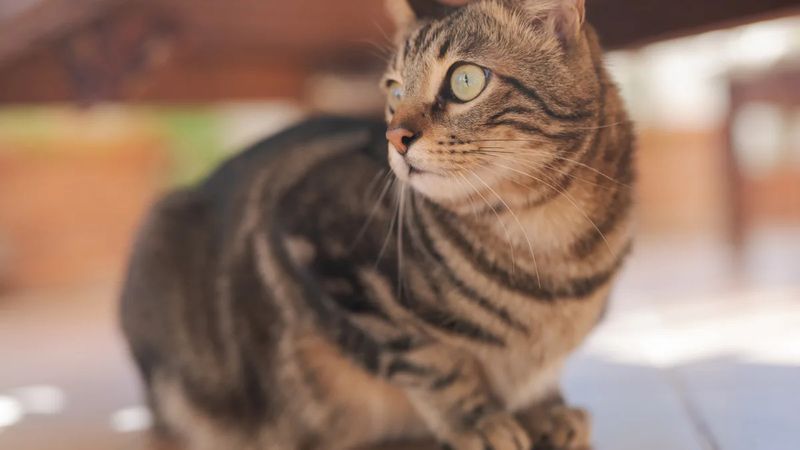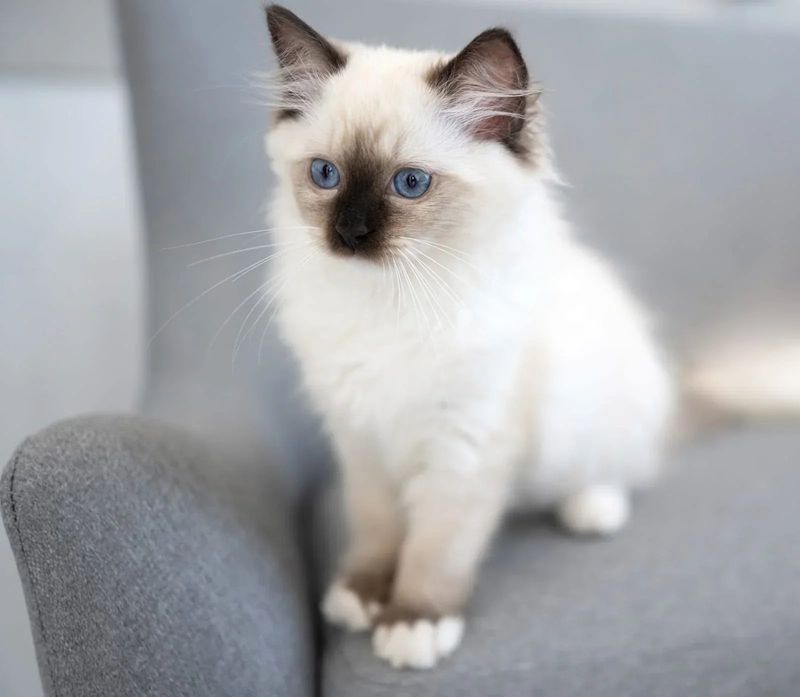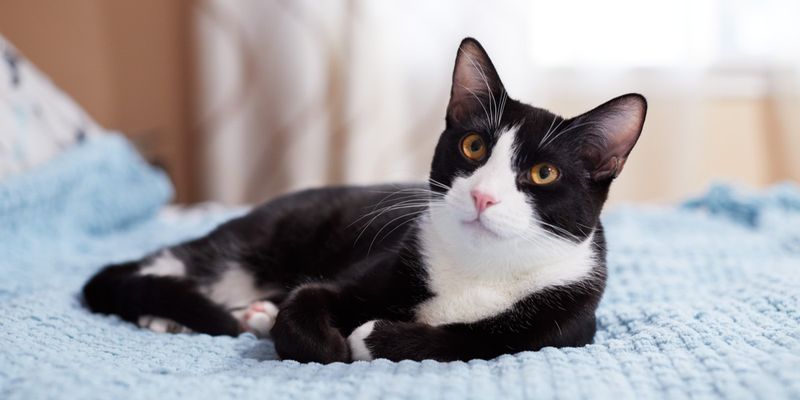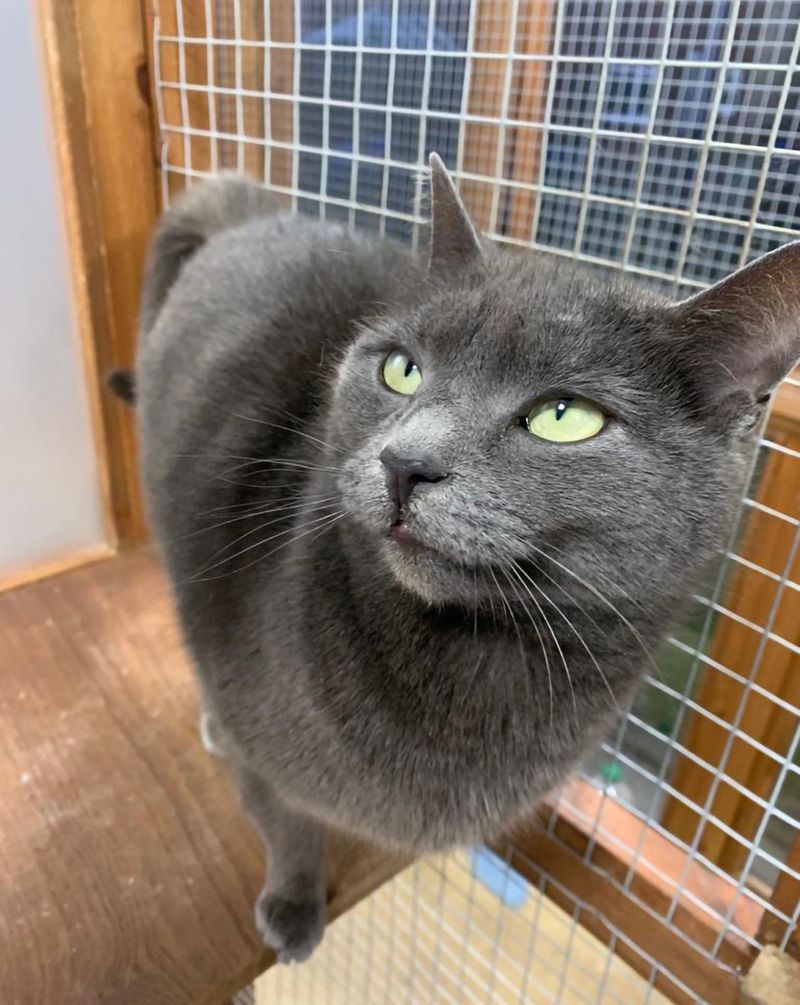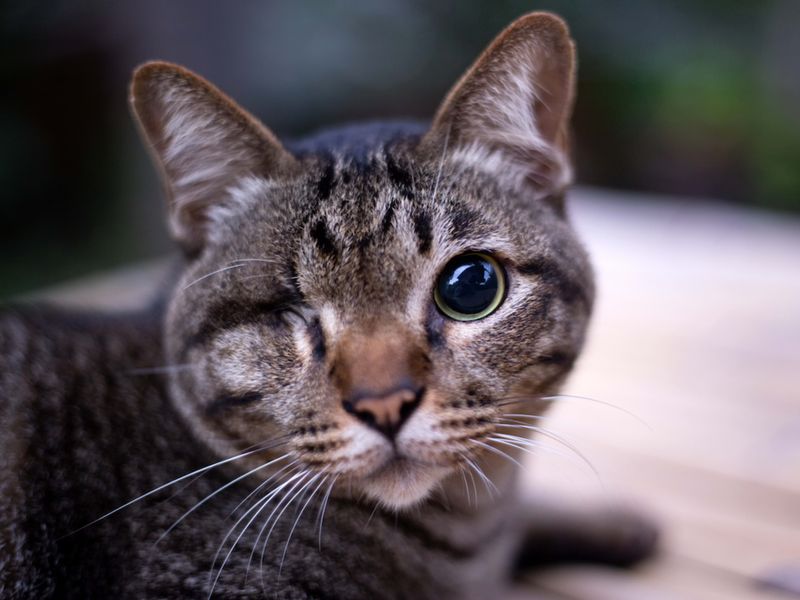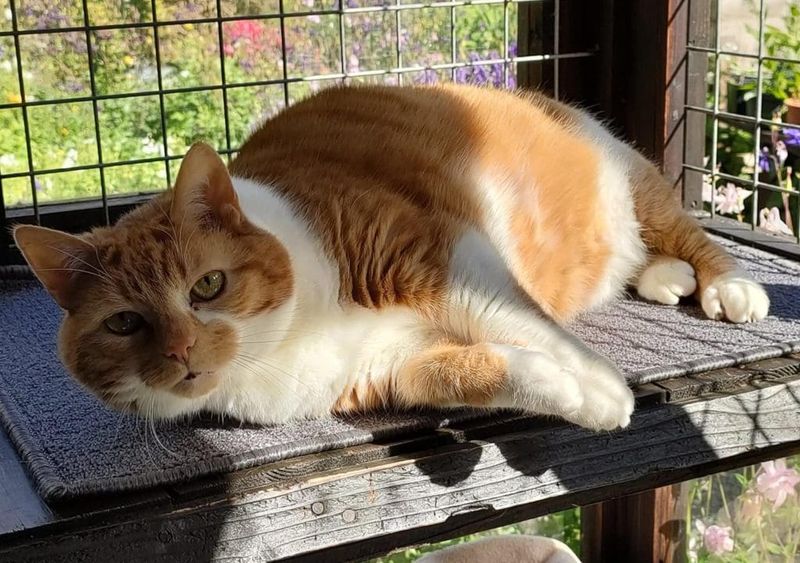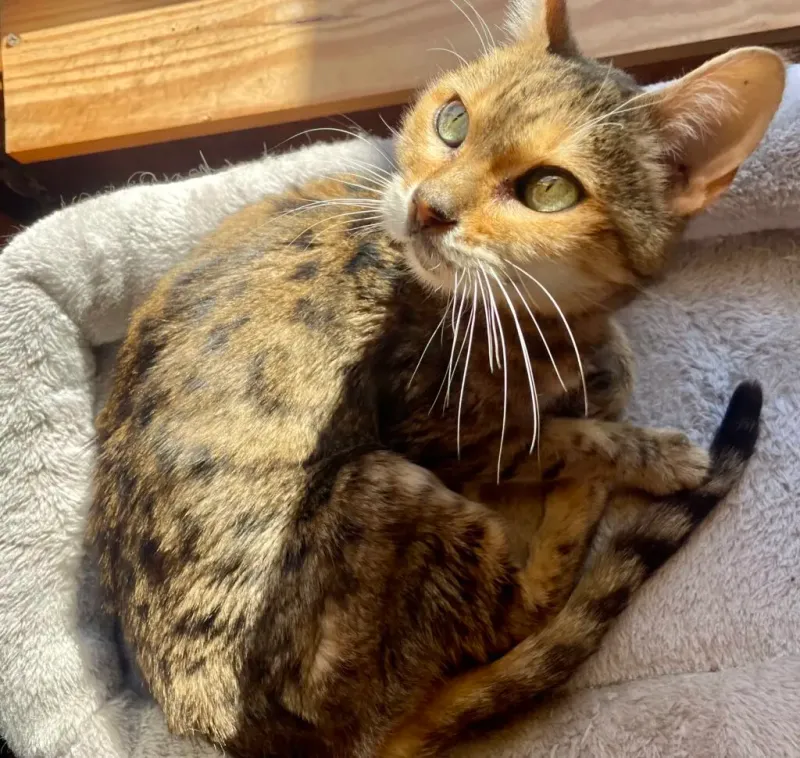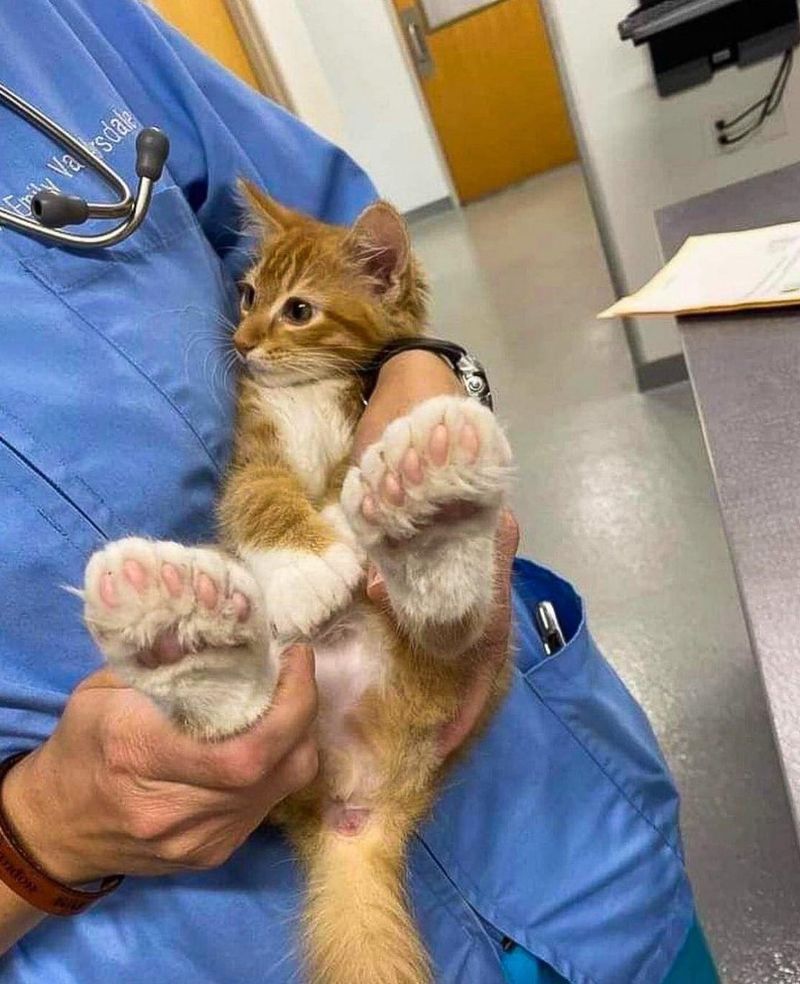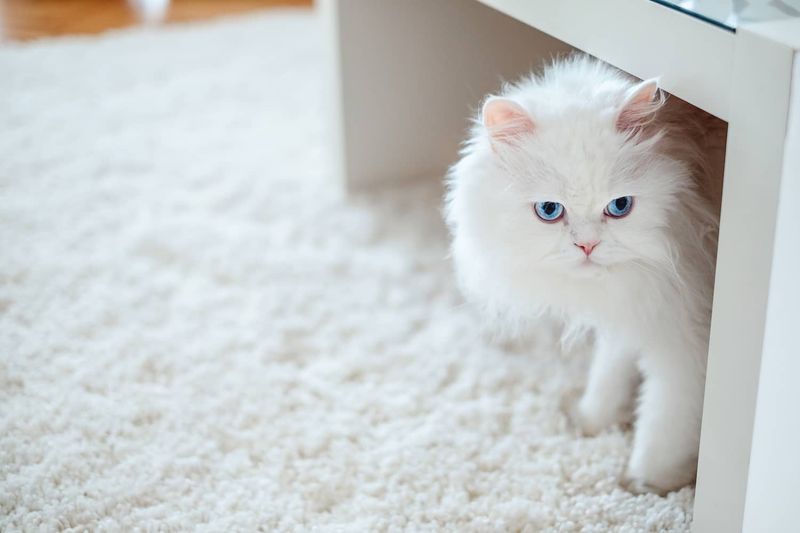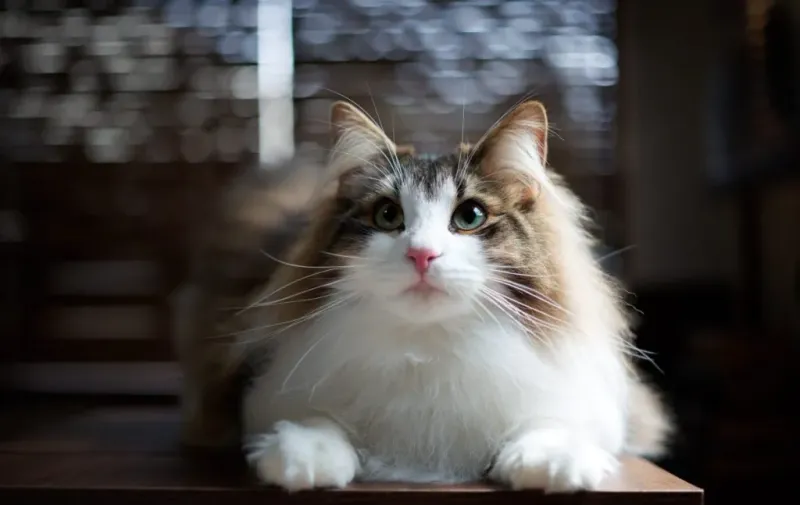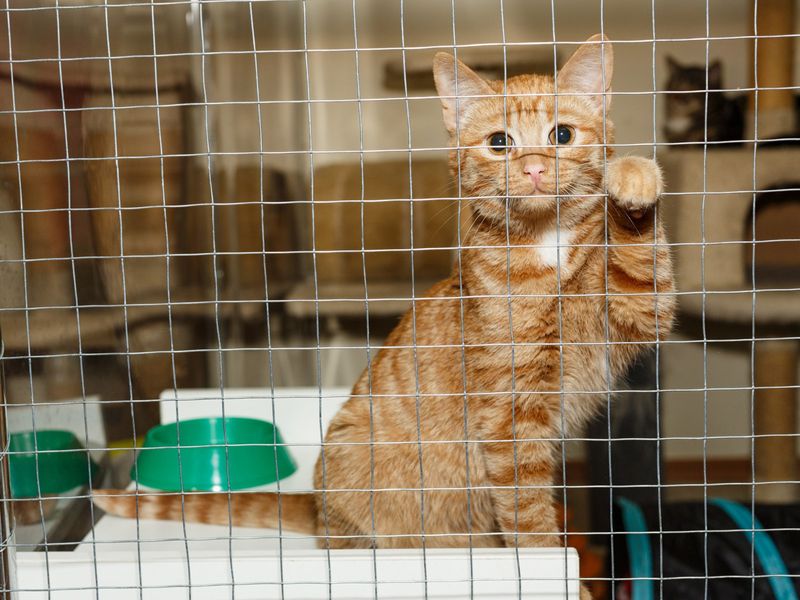📖 Table of Content:
- 1. Senior Cats
- 2. Special Needs Cats
- 3. Tortoiseshell Cats
- 4. Black Cats
- 5. Bonded Pairs
- 6. Siamese Cats
- 7. FIV-Positive Cats
- 8. Maine Coon Cats
- 9. Shy Cats
- 10. Persian Cats
- 11. Calico Cats
- 12. Adult Tabbies
- 13. Ragdoll Cats
- 14. Tuxedo Cats
- 15. Russian Blue Cats
- 16. One-Eyed Cats
- 17. Overweight Cats
- 18. Bengal Cats
- 19. Polydactyl Cats
- 20. Deaf Cats
- 21. Norwegian Forest Cats
- 22. Ginger Cats
Every year, millions of cats wait in shelters for their forever homes. While some find families quickly, others wait months or even years to be adopted. These overlooked felines often have special qualities that make them just as deserving of love. From senior cats to those with unique needs, here are 22 types of shelter cats that are often overlooked during adoption events.
1. Senior Cats
Cats aged 7+ often languish in shelters while kittens find homes quickly. Senior felines bring calm energy and established personalities—what you see is what you get. Older cats typically need less training and supervision than rambunctious kittens.
They’ve mastered litter box habits and understand scratching post etiquette, making them ideal for first-time pet owners or busy households. Senior cats often show immense gratitude when adopted, as if they understand they’ve been given a second chance. Their gentle purrs and contented presence can bring unexpected joy to homes willing to open their doors.
2. Special Needs Cats
Despite facing health challenges or disabilities, these cats are just as affectionate and loyal as others—but they’re often overlooked. They’ve adapted to their lives with incredible strength and don’t see themselves as limited.
From diabetic cats to those missing limbs, special needs felines frequently compensate with extraordinary personalities and affection. They teach their humans powerful lessons about resilience and finding joy despite limitations. Many shelters offer support programs for special needs adoptions, including discounted veterinary care and training resources. The bond formed with these exceptional cats often becomes particularly meaningful for their adopters.
3. Tortoiseshell Cats
The striking patchwork coats of tortoiseshell cats make them visually stunning, yet they’re frequently passed over due to rumors about their temperament. The infamous “tortitude” is largely exaggerated—these cats have distinct personalities.
Torties form deep bonds with their chosen humans and often show remarkable loyalty. Their intelligence and playful nature make them engaging companions who keep households entertained with their antics. Female-dominated (99% are female due to genetics), tortoiseshell cats bring a feminine energy to homes. Their independent yet affectionate nature strikes the perfect balance for people wanting an interactive but not overly demanding pet.
4. Black Cats
Black cats face the longest shelter stays due to outdated superstitions and the fact they don’t photograph well for adoption websites. Their sleek ebony coats actually hide incredibly diverse personalities underneath. Studies show black cats often have gentle temperaments and adapt quickly to new homes.
Many shelter workers note these midnight-colored companions tend to be exceptionally loyal once bonded with their humans. Black cats come in different breeds with varying fur textures—from short and sleek to long and fluffy—giving potential adopters plenty of options if they look beyond color.
5. Bonded Pairs
Adopting two cats might seem like a lot, which is why bonded pairs often wait longer for homes. Yet these cats rely on each other for comfort and stability—separating them can lead to stress and behavioral changes. The good news? They’re built-in best friends who keep each other occupied.
They groom one another, play together, and provide emotional support during transitions to new homes. Shelters frequently offer discounted adoption fees for bonded pairs to encourage keeping these friends together. The joy of watching two cats who truly love each other interact makes the extra costs of food and litter worthwhile for many adopters.
6. Siamese Cats
Purebred Siamese cats surprisingly end up in shelters more often than people realize. Their striking blue eyes and color-point patterns make them distinctive, but their vocal nature can overwhelm unprepared adopters who return them.
Siamese cats thrive on conversation and interaction with their humans. They’ll follow you around the house, commenting on everything you do with their signature melodic voices. Highly intelligent and trainable, Siamese cats can learn tricks and even walk on leashes. Their dog-like loyalty and affection make them perfect companions for people wanting an engaged, interactive relationship with their feline friend.
7. FIV-Positive Cats
Many people hesitate to adopt cats with FIV, but the truth is these cats can thrive for years with the right care. Regular checkups and a stable home environment make all the difference.
The virus weakens their immune system but isn’t contagious to humans or other animals except through deep bite wounds. Most FIV cats coexist peacefully with other felines without transmission issues. Shelters often waive or reduce adoption fees for these special cats to help them find homes. Their gratitude shows in their affectionate behavior—many FIV cats become exceptionally devoted companions once given a chance in a loving environment.
8. Maine Coon Cats
Some owners surrender Maine Coons when they realize just how big—and high-maintenance—these cats can be. Tipping the scales at up to 20 pounds, Maine Coons need consistent grooming for their dense coats. But with their playful, dog-like personalities, they make incredibly loyal and entertaining companions.
Their chirping trills replace traditional meows, creating a unique communication style with their humans. Despite their imposing size, Maine Coons move gracefully and tend to be careful around fragile objects. Their patient nature makes them excellent companions for children and seniors who appreciate their calm, steady presence.
9. Shy Cats
Timid cats who hide during shelter visits get overlooked despite having wonderful personalities that emerge in quieter home environments. Their fearful behavior is often situational—a response to the overwhelming sights, sounds, and smells of shelter life.
Given time and patience, shy cats transform dramatically once they feel secure. Many adopters report that these formerly fearful felines become the most loving and appreciative companions after a transition period. Shelters increasingly create quiet rooms and hiding spots to help these cats show their true selves to potential adopters. The breakthrough moment when a shy cat finally trusts you enough to purr in your lap creates an unmatched bond.
10. Persian Cats
The beauty of Persian cats comes with a price—high-maintenance grooming. Many are given up when owners realize their thick coats need daily care to avoid mats and hairballs.
Behind their regal appearance, Persians have sweet, mellow personalities perfectly suited for apartment living. They prefer quiet contemplation over wild play sessions, making them ideal companions for seniors or low-energy households. Shelter Persians may look scruffy initially but transform beautifully with proper care. Some shelters offer “glow-up” photos showing how these diamonds in the rough can shine after grooming, helping potential adopters see past their temporarily disheveled appearance.
11. Calico Cats
Despite their beautiful tri-color patterns, Calico cats are often overlooked in shelters thanks to lingering superstitions about their behavior. What some call “sassy” is usually just strong-willed independence.
Almost exclusively female due to color genetics, calicos bring strong personalities to their homes. They know what they want and aren’t afraid to communicate it through chirps, trills, and expressive body language. Research suggests calico owners report stronger bonds with their cats compared to owners of other coat patterns. These colorful companions choose their favorite humans deliberately and show remarkable loyalty once they’ve decided you’re worthy of their affection.
12. Adult Tabbies
Because brown tabbies are so common in shelters, they often blend into the background. Yet their classic look hides a surprising variety of lovable and distinct personalities.
Adult tabbies have developed personalities and settled energy levels that make them predictable companions. Their classic “M” forehead marking connects them to ancient Egyptian cats once worshipped as deities. Shelter workers often note that tabbies display exceptional intelligence and problem-solving abilities. Their natural hunting instincts make them excellent mousers for homes needing pest control, while their adaptable nature helps them fit into almost any household dynamic.
13. Ragdoll Cats
Large and fluffy, Ragdoll cats can be a handful for owners not prepared for regular grooming. Their semi-long fur needs upkeep to prevent tangles, but their famously floppy, easygoing personality makes them a joy to live with.
They follow their humans from room to room like devoted shadows, preferring to be wherever their people are. Ragdolls maintain kitten-like playfulness well into adulthood despite their size. Their non-aggressive nature makes them excellent choices for homes with children or other pets, as they rarely extend their claws during play and avoid confrontation.
14. Tuxedo Cats
In some urban shelters, tuxedo cats represent nearly three-quarters of the feline population. Their abundance can make them blend in, but don’t let that fool you—these cats have plenty of personality and style.
Studies suggest tuxedo cats may have higher intelligence than average, with exceptional problem-solving abilities. Their distinctive markings evolved as effective camouflage for hunting at dawn and dusk. Famous tuxedos throughout history include Sir Isaac Newton’s cat and composer Frederic Chopin’s beloved pet. These dapper felines bring both elegance and playfulness to homes lucky enough to adopt them, combining sophisticated looks with entertaining antics.
15. Russian Blue Cats
Russian Blue cats and mixes get overlooked in shelters because their subtle beauty doesn’t photograph well online. Their short, dense double coats have a distinctive silvery sheen that must be seen in person to be fully appreciated.
Highly intelligent and sensitive to human emotions, Russian Blues form deep bonds with their owners. They excel at reading moods and often provide comfort during difficult times, earning them a reputation as emotional support animals. Russian Blues shed minimally despite their plush coats, making them suitable for people with mild allergies. Their naturally reserved nature with strangers transforms into playful affection with their chosen humans, revealing a secret, silly side once they feel secure.
16. One-Eyed Cats
Losing an eye doesn’t slow these cats down. They adjust remarkably well and continue to live full lives, but unfortunately, many still struggle to find forever homes.
One-eyed cats compensate with heightened hearing and whisker sensitivity. Their depth perception adjusts within weeks of losing an eye, allowing them to jump, play, and hunt almost as effectively as before. Adopters of one-eyed cats report these special felines show extraordinary gratitude and affection. Their distinctive appearance becomes endearing rather than concerning once in a home, and many owners find their unique look becomes a beloved characteristic rather than a disability.
17. Overweight Cats
Chubby cats face significant adoption barriers despite their cuddly appearance. Many enter shelters after their owner surrenders, sometimes weighing twice their healthy target weight due to improper feeding. Extra pounds put dangerous stress on feline joints and organs.
However, with proper diet and exercise plans, most overweight cats can safely reach healthier weights within 6-12 months. Shelter staff report these cats often have the sweetest personalities—perhaps from receiving food as their primary form of affection previously. Weight management becomes a bonding opportunity for new owners, creating shared success as these cats transform into healthier, more active companions.
18. Bengal Cats
Owners sometimes surrender Bengal cats after realizing they require a lot of stimulation and exercise. Without enough activity, these energetic beauties can develop destructive habits.
Their wild appearance comes from Asian leopard cat ancestry, though modern Bengals are several generations removed from their wild roots. Their distinctive spotted or marbled coats feel uniquely silky—more like rabbit fur than typical cat hair. Bengals form strong bonds with active owners who engage their natural hunting instincts through interactive play. They excel at learning tricks, walking on leashes, and even enjoying water play—a rare trait among domestic cats that connects to their wild heritage.
19. Polydactyl Cats
With extra toes on their paws, polydactyl cats stand out in a crowd but sometimes struggle to find homes because of their distinctive appearance. These “mitten cats” sport up to eight toes on some paws instead of the typical number.
Extra digits actually provide advantages—better balance, stronger climbing abilities, and enhanced dexterity for opening cabinets or catching toys. Polydactyl cats were historically prized on ships as superior mousers because of their enhanced paw capabilities. Ernest Hemingway famously adored polydactyl cats, with descendants of his original six-toed felines still living at his Key West home. These special cats bring unique charm and conversation-starting features to homes willing to embrace their distinctive paws.
20. Deaf Cats
Often white with blue eyes, deaf cats can be overlooked in shelters. But these cats navigate the world confidently using their keen eyesight and an acute sense of vibrations to compensate for hearing loss.
Training deaf cats involves visual cues rather than verbal commands. Flicking lights when entering rooms prevents startling them, while stomping feet creates vibrations they can feel approaching. Deaf cats typically become extraordinarily bonded to their humans, staying visually connected at all times. Their unique need for visual communication creates special relationships with attentive owners who learn to “speak” through hand signals and facial expressions, developing a language unique to each cat-human pair.
21. Norwegian Forest Cats
In shelters, Norwegian Forest cat mixes often blend in with other longhairs due to misidentification. But their tufted ears, triangular faces, and dense, water-resistant fur truly distinguish them.
Developed naturally in Scandinavian forests, these cats have powerful bodies built for climbing and surviving harsh winters. Their back legs are longer than their front legs, giving them exceptional jumping abilities and a distinctive silhouette. Norwegian Forest cats combine independence with family loyalty. They’re content entertaining themselves during the day but seek affectionate connections in evenings, often choosing one family member as their special person while remaining friendly with everyone.
22. Ginger Cats
Male orange tabbies get adopted quickly, but female gingers (only 20% of orange cats are female) often wait longer in shelters. Their rarity makes them special—the genetic orange color requires two copies of the gene in females but only one in males. Orange cats have reputations for friendly, outgoing personalities that research partially supports.
Their distinctive coloration comes from pheomelanin—the same pigment that creates red hair in humans. Female ginger cats typically display more balanced temperaments than their sometimes-hyper male counterparts. Their warm coloration ranges from pale cream to deep marmalade, often with subtle tabby patterns that become more visible in sunlight.
